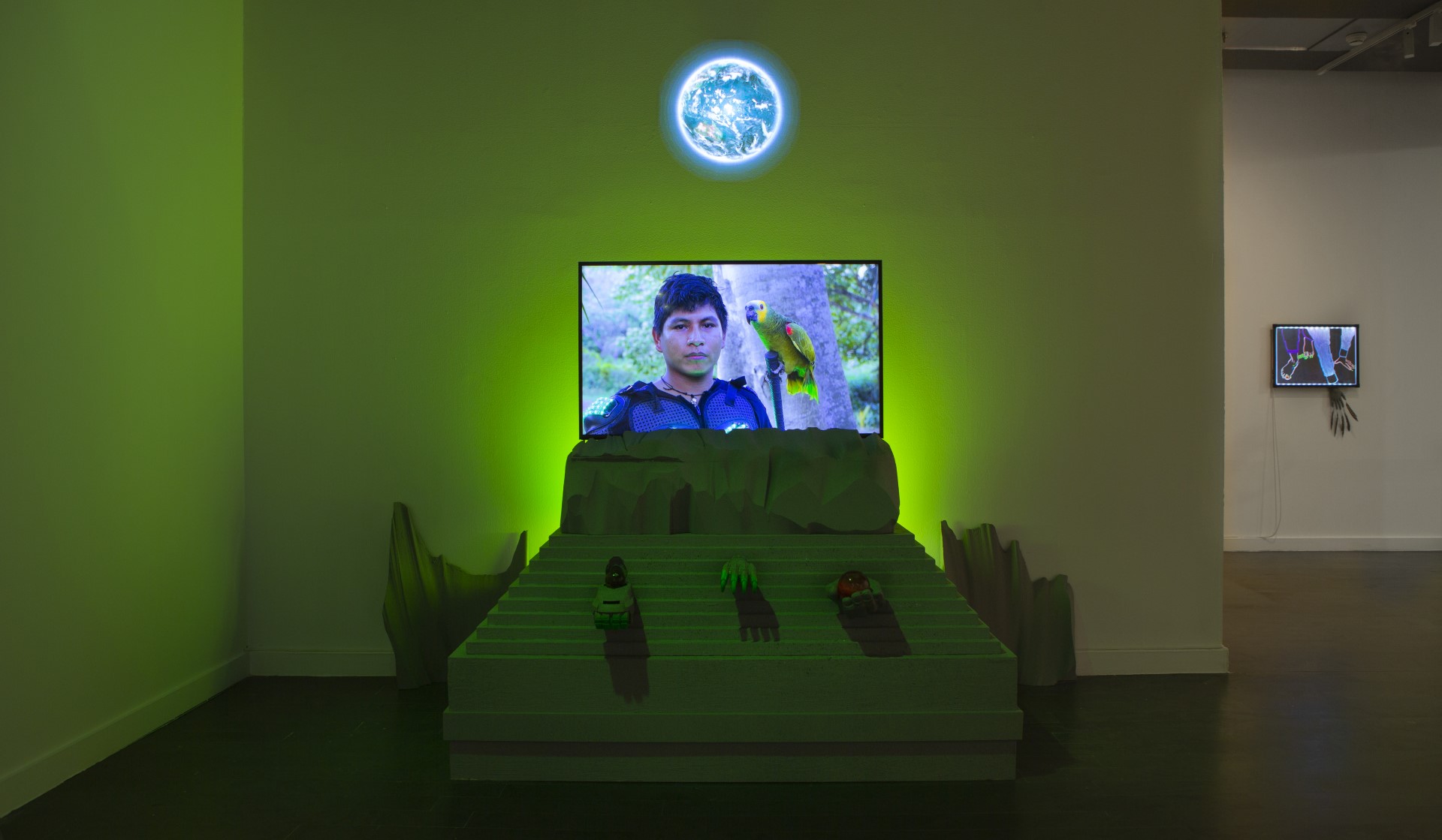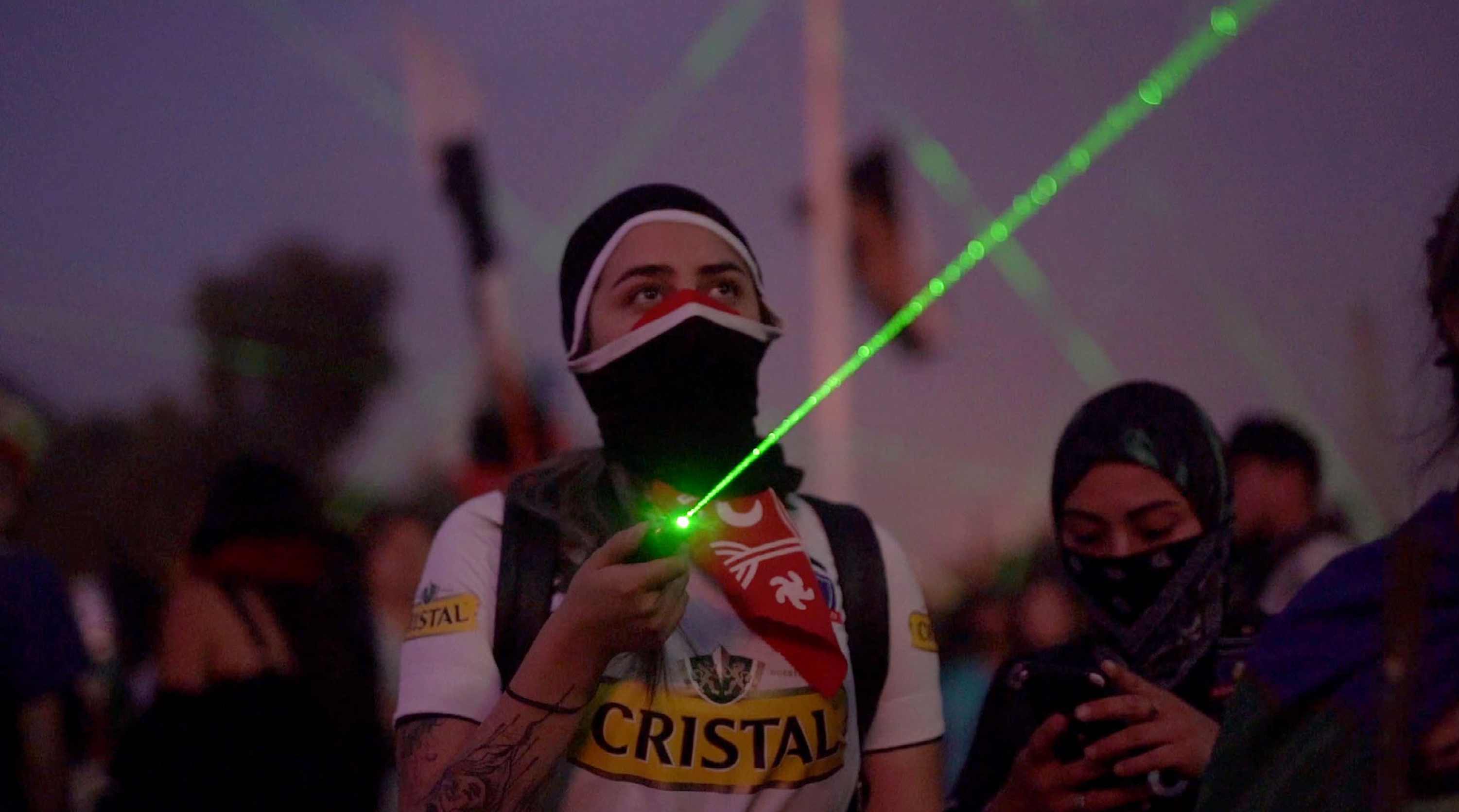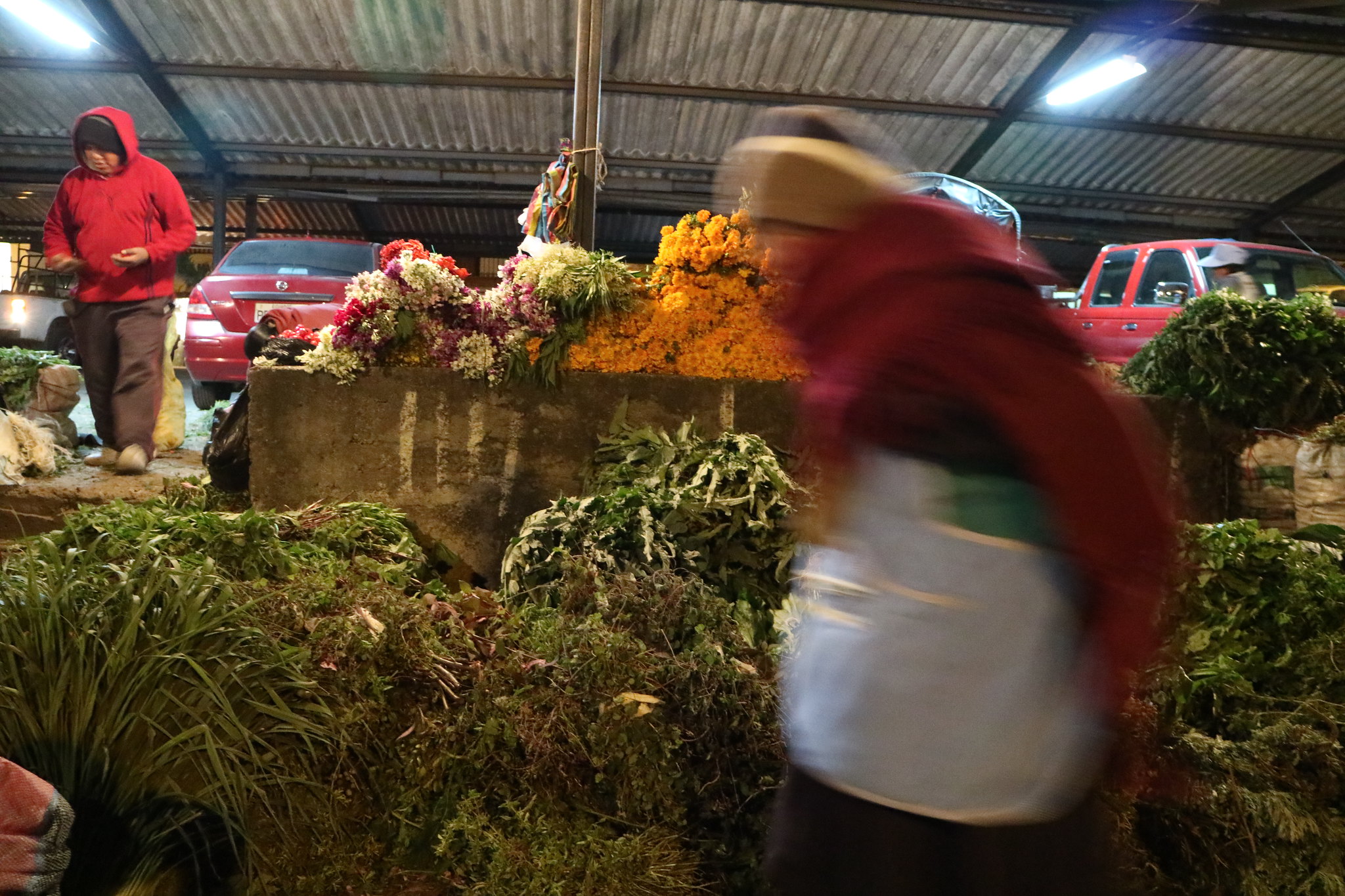To Think about the Cosmos Is to Think of Collectiveness
05/18/2022
Patricia Domínguez (Santiago, Chile, 1984) is an artist, educator, and advocate of the living. Her artistic work organically intertwines with her educational work; both are threaded by an experimental research on ethnobotany, healing practices, and the corporatization of wellness. Since 2014, she runs the educational and research platform Studio Vegetalista. From her home in Puchuncaví, Chile, she shares reflections on her methodologies and her learning and creative practices based on relationships of work, affection, obligation, and emancipation among living species in an increasingly corporatized cosmos.

Education
Schooling
I do not know if one can explain linearly how one became an artist. In my case, it was the combination of a legacy of several ancestral family obsessions and a personal one for creating new objects, thoughts, and structures. I was practically born with pencils in my hands; I drew the things I could not have.
In 2010, I went to New York to study botanical and scientific illustration at the New York Botanical Garden, and then I worked at the American Museum of Natural History in the paleontology department. At the same time, I did a master's degree in Visual Arts. I was dazzled with learning the scientific language back then, all this research and classification lineage of great explorers. But after two years of looking at plants from the outside, I ran into a stiff intellectual limit, a limitation of science that I needed to expand. It could not be that our insight of a plant was merely counting its leaves, petals, and sepals; there had to be something more, other ways of understanding. I then realized that I was much more interested in the cultural aspect of plants — the way they influence people's lives — than the morphological. To think about life through plants: How do they accompany us and resolve ailments of the contemporary world, such as tiredness and anxiety?
I set out on a personal search between science and consciousness. I started working with medicinal and vision plants to try to open my perception to this non-human, non-verbal language, which is super complex and has to do with the plant itself and how it facilitates, in alliance with humans, this inner, timeless, quantum knowledge. But it has to be accessed from other forms of perception.
This is how my multi-interdisciplinary need to combine art, experimentation, and science with healing, spiritual, futuristic cosmologies began. From this artistic and educational intertwining arises my project Studio Vegetalista.
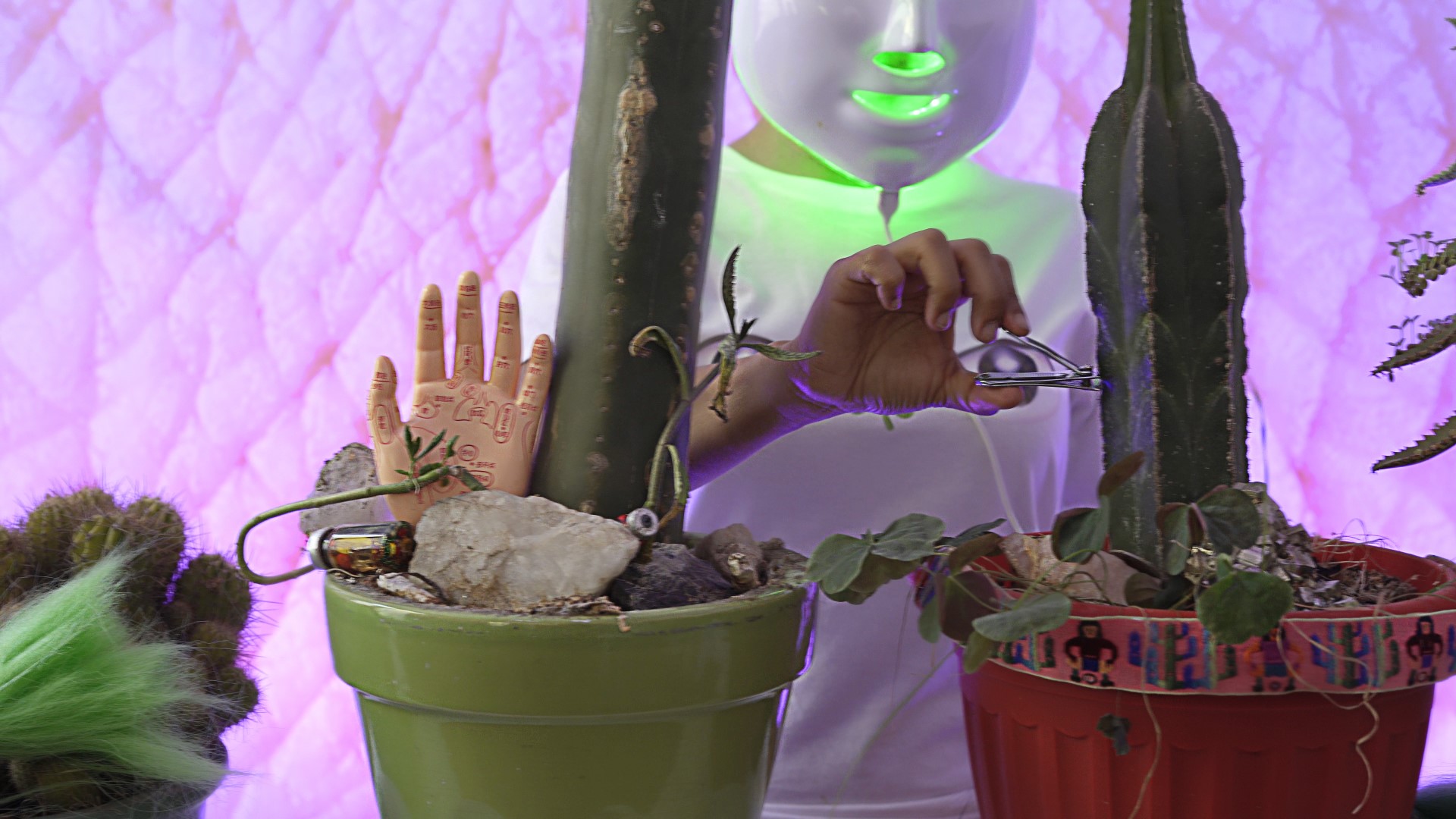
It is an experimental platform to generate ethnobotanical knowledge through an interdisciplinary practice that combines art, ethnobotany, and healing. This research and educational platform brings together artists, scholars, and people devoted to healing and various other practices linked to medicinal plants and ethnobotany. We focus on a decolonized ethnobotany, on the emotional and territorial extractivism of the lands we inhabit, on learning about healing and spiritual cosmologies, always with a critical approach to technologies and the digitalization of life, learning to activate our organic technologies.
It started in 2014 as a platform for ethnobotanical outreach through art and scientific illustration workshops. Since then, it has been shifting in resonance with my artistic work, with the things I am reading, researching, and documenting. All that input is interpreted experimentally in my artistic practice and channeled on the educational and collaborative side through Studio Vegetalista.
What interests me most about scientific illustration (which I still teach in more formal contexts) is that it requires you to stop, concentrate, to be in digital silence. Sometimes, I find this process more interesting than the illustration itself — which today has become a merely decorative or didactic item, rather than the colonizing tool it used to be. To draw, one must go to the hill, sit down to sketch the plant, dedicate time, attention, and affection. I see this as a way of resistance. We draw on the hill instead of occupying it to put a mine on it. In this way, I try to give a twist to the European naturalisms that have made other types of illustration invisible. I believe it is important to look for new ways of drawing and imagining that differ from the ones imposed on us.
Teaching
The main thing I have learned is how fundamental it is to build a community in the process of creating. To resonate with the people who participate in the workshops is to establish an artistic, non-hierarchical, open dialogue. It is also a way to engage in conversations, open up questions, and dive in to expand together. I learn a lot and conversations have become one of my main sources of information and research.
Over the past eight years, more than 400 people have attended the sessions. It has been a beautiful way to meet others who are interested in the plant world and to exchange knowledge. Gradually, I have proposed that they use the place too to hold classes and, thus, train one another. The idea is that the platform can serve us all to have comprehensive training around the vegetal and the living world.
On the website, there are experimental essays on ethnobotany, and I also conduct interviews with experts in healing with medicinal plants. I make teas and incense, we exchange seeds, we take the plants and dream them, we make reading and study groups, I organize conversation events on extractivism and sacred plants, among many other things. Thus, we reflect on the current relationships between people and plants beyond scientific botany and from a cultural, emotional, digital, spiritual, and artistic perspective. This platform helps me combine all the different activities that I do. Ethnobotany is the common thread.
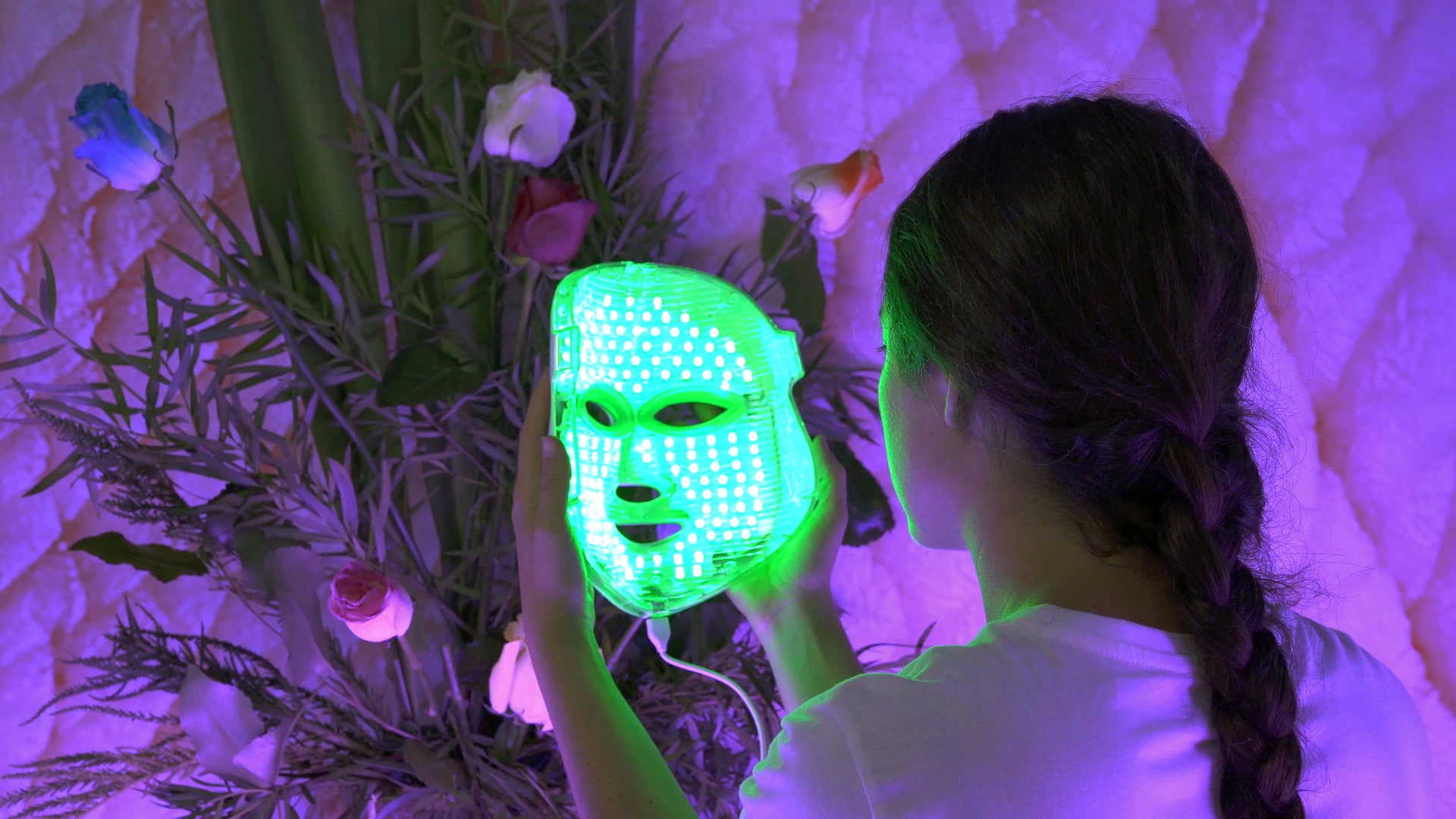
Learning
Studio Vegetalista and my artistic practice drink from various and very diverse wells. These days, I consider myself a student of the language of plants. As Eduardo Kohn says, forests speak through images, like dreams. Plants have a non-verbal, complex language with multiple layers, temporalities, and references. Plants have a non-verbal way of expressing themselves, and to connect with them, you have to let go of science and jump into the perceptive void of the "Vegetal Matrix."
For me, plants are a source of knowledge rather than objects of study. They are powerful earth technologies that can be our allies: they can gift us vision, reset us, cleanse us, guide us, challenge us, accompany us, restore us, and so much more. That is why I approach ethnobotany in a sacred, emotional, experimental way. I am learning to inhabit the living energy of visionary, healing plants. By this, I mean that I use the non-verbal language of plants to invent new languages and new forms of communication. Everything can be reinvented, a plant once told me.
I am interested in the current and future relationships between humans and plants, finding new ways to represent and speculate with them in this technological era, and in the context of the cyborg qualities that we are incorporating into our holograms.
An experience that unlocked new knowledge for me was a group experiment we did with a friend and colleague, Camila Bardehle. We invited a woman who conducts shamanic journeys with drums, and we traveled to ask some plants their numbers, their codes, how they wanted to be represented. From there, we opened up a whole series of sessions to connect with the invisible, with the perception of information that we feel but do not know how to decode. Then I continued to delve deeper into those places with the visionary artist Eulàlia Valldosera and her energetic drawing sessions. These are exercises to expand the imagination and perception, which I believe are very necessary in these times of chaos.
Processes
Beginnings
New projects arise from my fundamental questions and concerns. It is always a new way of researching those questions, pushing them, fictionalizing them, speculating around them, attuning with them. They start from emotion and things I do not understand, and then the process shapes the work; I do not work with a script.
Questions
I learned to incorporate all these wonderful actions while studying at Hunter. They make my work more complex and less linear, for which I am very grateful. I learned to play and recombine things with confidence there; I could not do that before, but I loosened up.
Strategies
The image that makes the most sense to me for explaining my methodologies is to think of my work as a big stomach, where I put what is happening to me on a multidimensional, personal, and planetary level. A stomach that digests and brings out art projects in the process. It is the technology I have found to deal with my questions. A personal ritual of adjustments and symbolic thinking to survive and live in this corporate system. The work helps me digest the physical, mental, and emotional issues, my own biography, and the planetary.
What I do seek to do intentionally is to hack this capitalist system, to use its tools for something else, in a gesture of recoding. The work I am doing is to reorganize parts of the system from within, proposing a mystical, ritual, sacred reordering around the living and the common. I intend to appropriate and use its forms and codes, twisting them through fiction or by shifting priorities, transforming standard or homogeneous uses within the system.
The digital domain is white and patriarchal at its core, so where can the heterogeneous be represented? How much space for representation do nonnormative practices and those related to healing or other worldviews have?
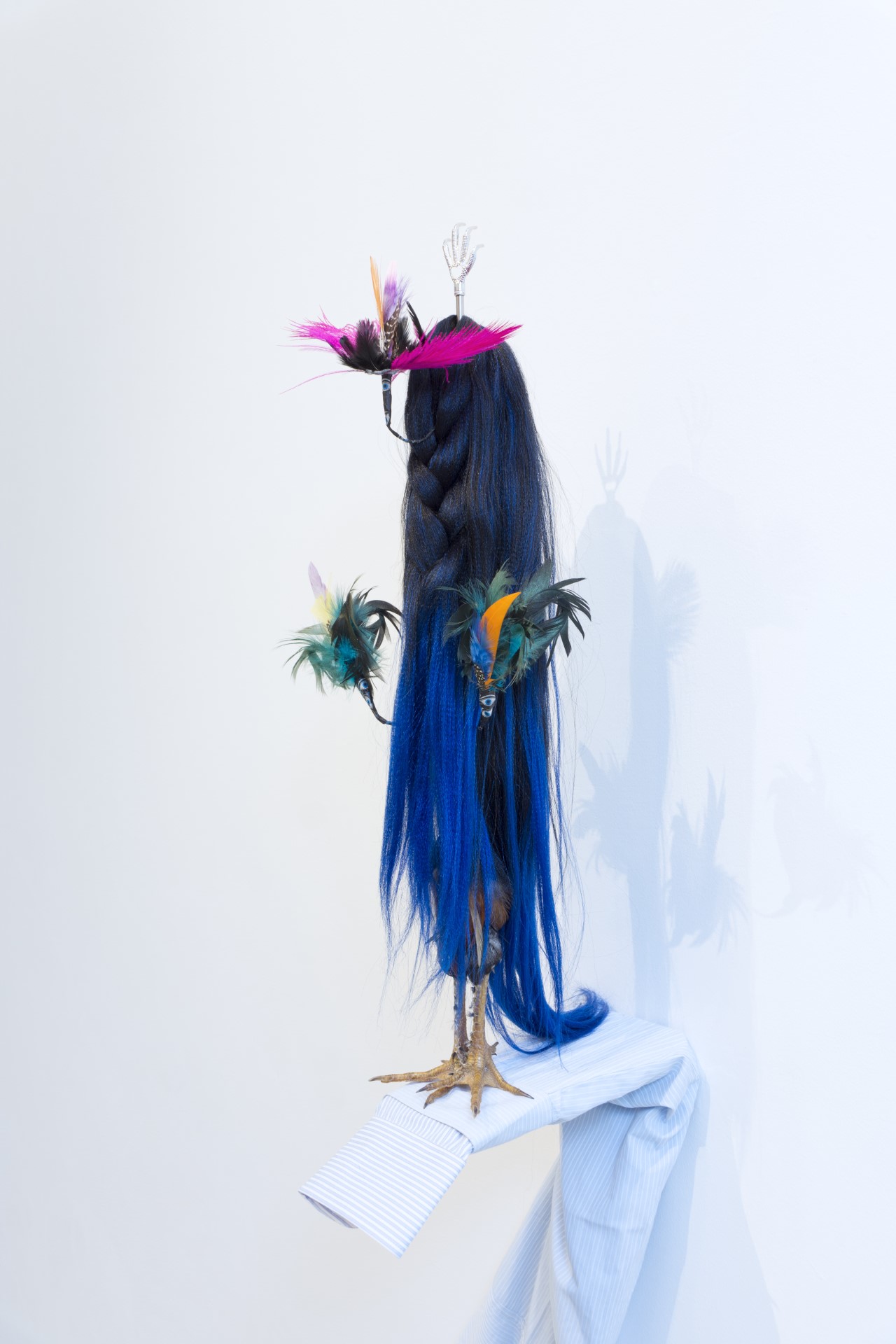

Procedures
My work is conceived of in a cosmological way and from a feminine point of view. It is another way of accessing the same issues of our precarious realities but through a more inclusive dream state, a more intuitive, not-so-obvious, or utilitarian awareness. Life processes are not linear.
I think of ways to hack the digital and bring it back into matter, incorporate it into the body. Not only to digitize but also to do the reverse process. Everything can be reinvented. Fiction has been key to my creation and thinking processes. Fiction allows me to bring together things that have not come together yet. We are used to accessing information and things in the same ways because access paths seem to be standardized but through fiction, we can imagine other possible ways of accessing reality.
Dialogues
I have collaborative works, such as the videos, and other more individual ones, such as the watercolor paintings. For making the videos, I have been collaborating with my cousin and her music project Futuro Fósil for years; with the artist Álvaro Muñoz, who creates the 3D models for me; with Emilia Martín and Cepams, who are filmmakers that have helped me with their talent in all my latest videos, among many others. Each one of these people has been crucial in the results.
Over time, I have come to understand that to think about the cosmos is to think of collectiveness, of the interrelationships among many beings. The word ‘cosmos’ allows me to think of an organizing system of relationships, climate, and interconnections, and open up to new materials and conversations. Cosmos is collectivity and so are the projects I create. I always leave space for the people who help me to make subjective contributions.
Projects
In Progress
I am producing two sibling — sphinxes — projects that will take shape in two videos, a series of watercolor paintings, and a joint publication. In late 2021, I traveled to some of the farthest places on this Earth, not on a physical but a conceptual level. I stepped into the machines at CERN, the Large Hadron Collider in Switzerland; a month later, I unplugged myself from the digital matrix to enter the vegetal matrix in the jungle of Madre de Dios in the Peruvian Amazon. Two abysses of the portal to the invisible.
The CERN (Symmetry Residence, Chile) and the jungle (Screen City Biennial, Oslo). Two completely different approaches to access the same invisible space, the one we can no longer touch with our hands. On the one hand, science through machines, and on the other hand, spirituality through vegetal consciousness. The W or quantum dimension that I learned about at CERN is the same spiritual dimension in which plants function and where they take you to.
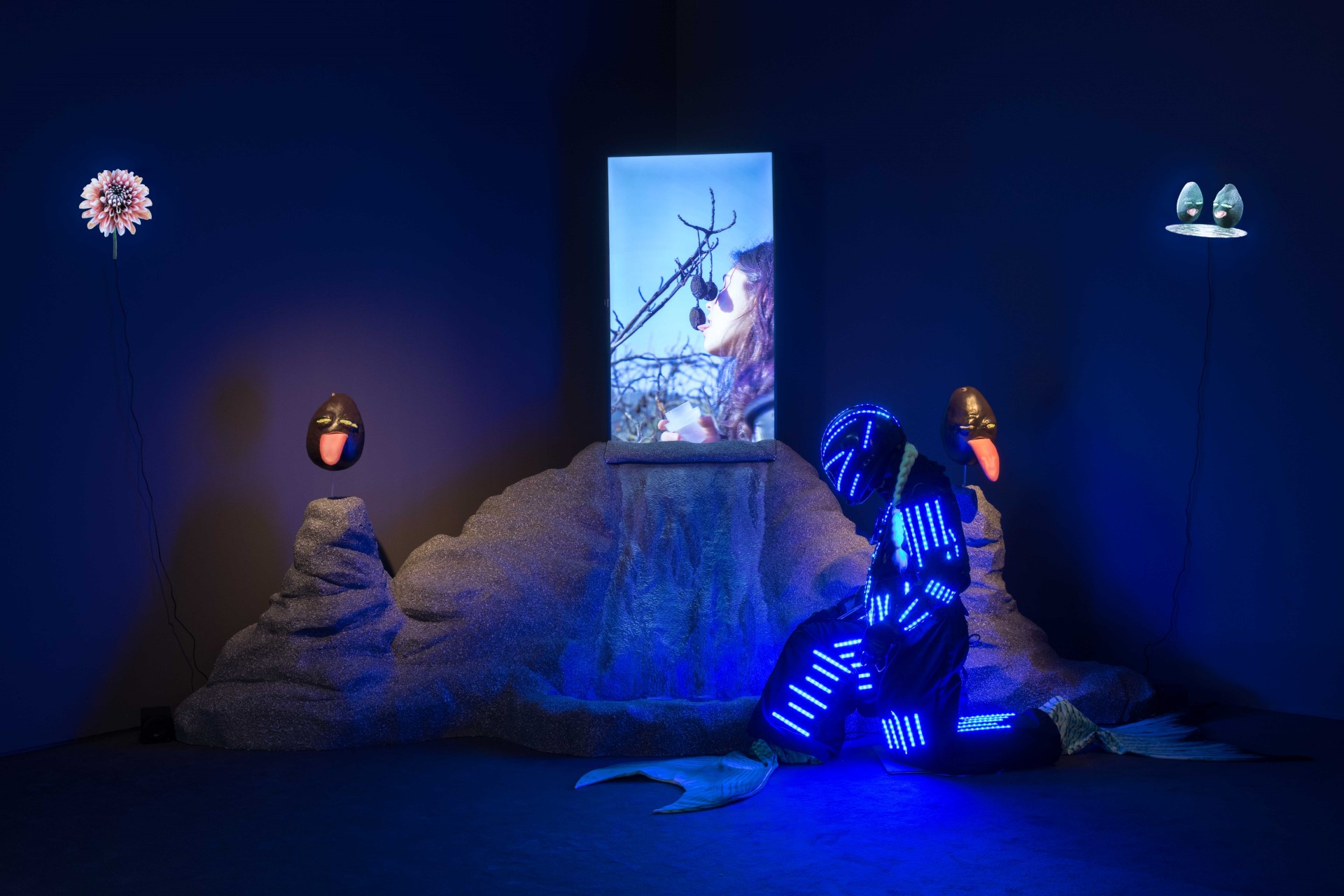


In Retrospect
The most important thing has been the people I have met while producing the works. I learn through stories — theirs and mine — emotions and experience in the process of creating.
My focus is multispecies, the more-than-human. Lately, this has become more active and political because harsher crises have come. I start from specific connections: for example, in Colombia, I ended up working with former druglords’ horses and their underage keepers for You Are a Prince-ss (2014); in Bolivia, with a guardian boy of a blind toucan for Madre Drone (2019-20); in Puerto Saavedra, Chile, interviewing Mr. Lorenzo Aillapán while he sang like a bird about the environmental changes brought about by pine monocultures for idreamt@ceramics.cl (2017). I learned about the brutal water crisis while collaborating with Mujeres del Agua, in the Chilean area of Petorca, for The Ballad of Dry Mermaids (2020). About illegal gold mining while filming the mercury-stained hands of the brother of the boy who helped us shoot the video for Matrix Vegetal (2021) in Madre de Dios. I just had my notions of reality deconstructed in the 10 days I spent at CERN near those mighty machines, listening to particle physicists for the Tres Lunas más abajo video, which I am producing.
The personal connections and the experience of inhabiting all those places are my inspiration, my real source of learning. Everything I learn comes from local contexts and from other people; what goes on here is brutal. Both the relationships and the things learned are in the creative process. These bonds modify me, forming a constellation as they pass through my body, through my “stomach,” and come out recoded as projects that include some of those learnings, plus my own inventions and speculations, attentions, and obsessions. Through art and creativity, I intend to reflect on these uneven relationships and transform them, reorder them — at least in a symbolic way — in the works. It is a small act of resistance in these convulsed lands we inhabit.
Contexts
To a greater or lesser extent, almost all my works are done in collaboration with what is occurring. It is inevitable to connect with the land when you live in a “sacrifice zone” like Chile — a country of dispossessions.
For example, the Madre Drone video was made in collaboration with contingency. In 2019, I went to Bolivia to do a residency at Kiosko, but when I arrived in Santa Cruz, the Bolivian Chiquitanía region where it is located was burning. The city was full of ashes, all the people were gathering groceries, and I understood that I could not make art like that. I ended up in a shelter for animals affected by the fires in Roboré, and I had to receive a blind toucan — some kind of powerful mythological visitor. It was quite hard to see all those fires, the dead animals, and the displaced populations. Then I had to deal with the civic strike due to Evo Morales’ electoral fraud. I was trapped in the city center with other residents without food or cash; we almost could not leave the country. Then I jumped to Chile amidst the social outburst of November 2019, in which many people suffered eye damage or were blinded as a result of police repression. After that, I came to live in Puchuncaví, a “sacrifice zone,” located in the mega-drought area near La Ligua and Petorca.
Navigating different territories makes you learn. All the information I receive is from experiences lived by inhabiting and navigating these real contexts, and that disarms the western dichotomy of art-nature. If the river is drying up or your surroundings are burning, you understand that your whole being is being affected. It is not a postcard of the fire but yourself there that is on fire.
